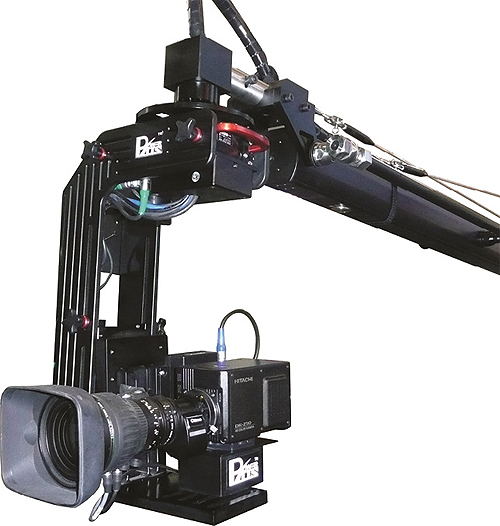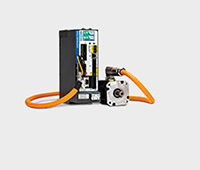
“Power Plus developed motorized devices that control the focus and zoom rings on the camera head using magnetic encoders supplied by RLS, a Slovenia-based associate of Renishaw.”
The seamless integration of virtual reality (VR) broadcast technology calls for highly repeatable camera positioning. Power Plus’ high-precision pan-tilt head and jib systems use a combination of Renishaw’s RESR incremental rotary (angle) encoder system, on both the pan and tilt axes, and the RGH40 series non-contact optical read-head, delivering repeatability to 0.004 arc seconds. Hong Kong-based Power Plus is a subsidiary of Digital Precision Systems Ltd. (DPS), the exclusive China-based authorized dealer and service partner of Vinten, a global leader in broadcast camera support equipment and a key supplier to China Central Television (CCTV). In June 2012, DPS collaborated with virtual graphic system providers to present a CCTV “virtual live” broadcast of the Shenzhou-9 spacecraft launch at the Jiuquan Satellite Launch Center in China.
The broadcast included virtual images of the spacecraft in its real-time position as it entered its orbit around Earth. VR technology relies heavily on camera positional data for perfect synchronization between virtual and physical elements in real-time broadcasting.
“The use of a pan-tilt head allows stable and precise movement of the camera in the live broadcast, while our graphic enhancement production system acquires camera positional data via the Renishaw encoded pan-tilt head and Vinten’s VR interface box,” said Charles Wong, director of Power Plus. “The virtual studio system then renders and generates virtual live feeds by compiling and editing the real-time streaming video data and the virtual tracking data (camera position), followed by tuning and distribution prior to broadcast.”
Available with a wide diameter range and compatible with a series of read-heads, the RESR incremental rotary encoder is designed with low mass and low inertia, to ensure excellent dynamic performance. The encoder’s direct-mount mechanism eliminates backlash and other mechanical effects created by couplings or bearings.
The encoder ring features a patented taper mount that corrects for rotor eccentricity, simplifies integration and minimizes installation error. The incremental encoder ring offers an angular resolution to 43.2 M counts per revolution (CPR), satisfying the most demanding requirements in today’s broadcasting industry.

“Power Plus’ jib system uses Renishaw’s RESR incremental rotary (angle) encoder system on both the pan and tilt axes.”
“Compared with the use of traditional enclosed encoders, the non-contact version has excellent repeatability and zero backlash, both critical to VR performance,” said Wong. “We selected Renishaw after seeing their success in Vinten products, and after comparing encoders from different suppliers.”
Power Plus’ current pan-tilt head models offer resolutions to 1.6 M CPR which is sufficient for today’s broadcast standard, and even 4K TV when upgraded. “The resolution of broadcasts is expected to increase sequentially,” said Wong. “Some manufacturers have already launched their new 4K TV models which offer resolutions four times higher than current high-definition television. So, we’ll also need to upgrade the encoder resolution, and the range of Renishaw encoders provide greater flexibility for upgrades in the future. We also have new projects that involve TONiC and RESOLUTE absolute encoders, so with Renishaw’s support, we can develop more innovative and successful broadcasting products with confidence.”
Renishaw
www.renishaw.com
Filed Under: Virtual reality, Encoders (rotary) + resolvers, Encoders • absolute, MOTION CONTROL





Tell Us What You Think!